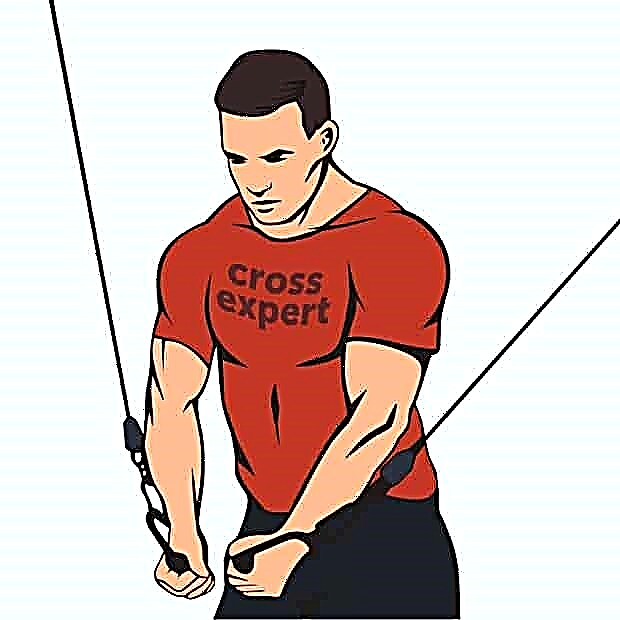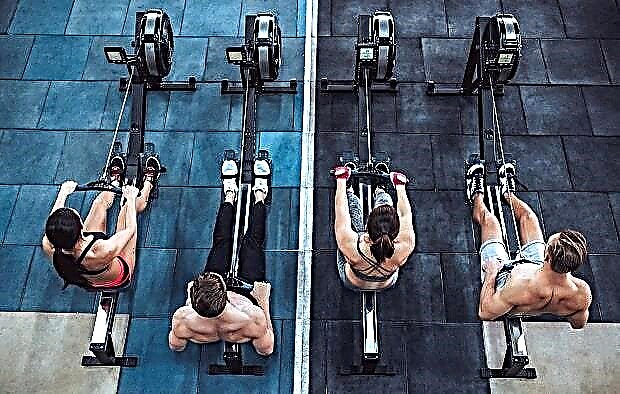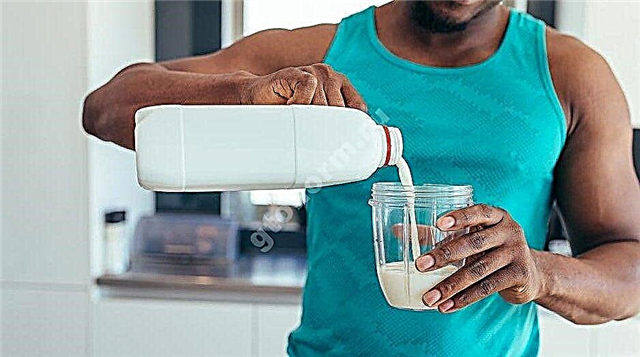Each of the gym goers has their own motivation and their long-term goals. But almost all athletes agree on one thing - the desire to become stronger. This is what the strength training program is designed for. How to develop muscle strength while exercising in the gym or at home, we will tell you in this article.
Features of strength training
The most important postulate regarding muscle strength training is that there is no direct correlation between muscle mass and physical strength.
It is clear that if you practice according to traditional bodybuilding schemes, your strength will grow along with muscle mass. However, not so much compared to the powerlifting program. At the same time, powerlifting classes will give a certain muscle mass, but not as much as in bodybuilding. In short, what we develop is what we get.
The second important point is that there is no abstract general strength - there is only the strength of local muscle groups. What follows from this?
- Do you need to figure out in advance why you want to get stronger? What will you do when you get stronger? Based on the biomechanics of movement, you will immediately understand which muscle groups you need to develop first. Accordingly, the emphasis in your program will be on them.
- The manifestation of the maximum power potential depends on how perfectly you master the technique of the movement in which you want to show the utmost effort. A clear picture of the movement that you will make should form in your head. You don't have to think about exactly how you will do it. The brain must send a signal to the muscles, for example, a jerk. And the body must perform this movement. At the same time, there should be no thoughts in my head, like: Am I addicted enough? Have I redistributed the weight to the entire foot? Will I put my arms over my head or behind my back? There should be no thoughts in the head at all. The body itself must have an absolutely clear algorithm.

© andy_gin - stock.adobe.com
Elimination of “weak” links among muscles
To make the maximum effort in any movement, not one muscle group should work, but a whole sequence - some muscles should stabilize the position of the joints, others should perform the initial part of the trajectory, and others should "take over the initiative" from the latter in a certain section of the amplitude. At the same time, there should be no weak links in the entire muscle chain.
Let's look at the example of a bench press lying down (lift version): the legs and buttocks stabilize the position of the pelvis, the extensors of the spine create hyperlordosis, which displaces the chest upward. This reduces the trajectory of the boom. On the lift, the bar is located on the front delts and triceps. As the bar is lowered, the weight is more and more distributed over the pectoral muscles. After the bar touches the chest, it is important to turn on the triceps, chest and back delta at the same time, and so that the latissimus dorsi assists this whole "ensemble". Moreover, at the moment of breaking the bar from the chest, the heels should hit the floor, transferring kinetic energy to all the listed muscles of the upper shoulder girdle. There is a situation in which the underdevelopment of the posterior delta and the inability to turn it on will significantly reduce the result of the final exercise.
For the manifestation of the maximum power potential, the nerve impulse sent by the brain to the muscles is important.
The frequency of this impulse is always the same, but the number of recruited muscle fibers is not. The better your neuromuscular connection, the more motor units in the muscle will be involved simultaneously. Accordingly, the element of bodybuilding training that allows you to use muscles with low weight will also come in handy.

© valyalkin - stock.adobe.com
Macro cycle of strength training
Summing up the above, we note that our macrocycle for the development of strength should include the following training:
- on the development of neuromuscular communication. Here you can use the training of oxidative muscle fibers (OMF) according to V.N. Seluyanov (see below for more details);
- on the development of movement techniques with the development of various sections of the amplitude;
- on the development of glycolytic or fast muscle fibers using 80% of the maximum weight;
- "Backroom" - exercises aimed at eliminating those very "weak links".
When training muscle strength, try to avoid excessive acidification: the number of repetitions and approaches within the framework of strength cycles should be significantly lower compared to training aimed at gaining muscle mass.
This is because the more reps we do, the more hydrogen ions are released in our muscles as a result of anaerobic glycolysis. These ions increase acidity within the muscle cell and, when present in sufficient quantities, facilitate the access of anabolic hormones to the cell nucleus. In excess, they cause excessive catabolism.
In the process of building strength, we face two challenges. Firstly, to reduce catabolism from current training, and secondly, due to the development of mitochondria in the muscles, to increase their resistance to acidification. The fact is that it is mitochondria that are capable of absorbing hydrogen ions.
Gym strength training program
Since the goals and objectives are different for everyone, and the volume of the article is limited, we will consider how the strength training program in the gym is built using the example of the bench press, as the most visual and widely known exercise.
|
|
|
|
|
|
|
Holiday |
|
|
|
| Holiday |
| Holiday |
|
Explanations:
* Working out the GMV means that you are using a resistance weight that is approximately 70-80% of your rep max. The average number of repetitions in the approach is 10, the high number of approaches to the bar is 10 or more, as part of the developmental training of the GMV. Rest between sets is 1-3 minutes, optimally 1.5 minutes. Your task is to create a slight local acidification. In between sets, it is advisable to perform light dynamic work to neutralize hydrogen ions in the muscle fiber.
**Even less weight can be used here - 40-50% of the re-maximum. The development of the pectoral muscles in this case is as follows:
- 30 s - approach
- 30 s - rest
- 30 s - approach
- 30 s - rest
- 30 s - approach
- 30 s - rest
This is one episode. The approach is performed at an extremely slow pace; muscle relaxation at the extreme points of movement should be avoided. Rest between episodes - 15 minutes. At this time, you can perform squats with a barbell in the same way.
***The scheme of work will be exactly the same as presented above, with the only difference that you will be performing a bench press with a narrow grip, respectively, your target muscle group will be the triceps muscle of the shoulder.
Home strength training
As for the development of strength when working with your own weight, there is a separate direction - calisthenics. This is a system of exercises performed primarily with your own body weight. It is on the work with the weight of the athlete that the home strength training program is based. In addition to the fact that the exercises included in the program do not require special sports equipment, it has a number of other advantages as well as disadvantages.
Consider the positive and negative points:
- the ability to train anywhere and anytime, you don't need a gym;
- the need to always engage several muscle groups at once, which leads to a greater biochemical response;
- there is no way to pick up the weight of the weights;
- fewer opportunities to work small muscle groups in isolation.
When working on strength, we must constantly increase the load. When exercising with our own body weight, we have two ways to ensure this:
- the first is to perform the exercise more slowly;
- the second is to perform more repetitions in the exercise or perform more series.
The element of technical work is dropped. If your program consists of pull-ups and push-ups, you will be doing pull-ups and push-ups each workout, thereby improving your technique.
The problem with "drop-outs" is also solved here by itself. During the exercise, the lagging muscle group will somehow develop its strength to the required level.
And another big plus is that you don't have to think about the SMOA and OMV. You simply alternate between "slow" and "fast" workouts, that is, with explosive exercise and at a slower pace.
In practice, a bodyweight training program would look like this:
| Explosion |
|
| Slow |
|
| Recreation | |
| Explosion |
|
| Slow | The same program, but the number of episodes is progressively increasing |
| Recreation | |
| Moderately |
|
| Recreation | |
| Explosion | Add one rep to each series of the above exercises |
| Slow | The program is the same, we are progressing the number of episodes |
| Recreation | |
| Explosion | Add one rep to each series of the above exercises |
| Slow | The program is the same, we are progressing the number of episodes |
| Moderately | The program is the same, but the maximum number of repetitions in each movement should increase |
When mastering the numbers of 60 or more push-ups, 20 or more pull-ups and 100 or more squats in one approach, you can move on to mastering more complex exercises, such as going out with force on two hands, push-ups in a handstand head down, lifting with a roll over.









